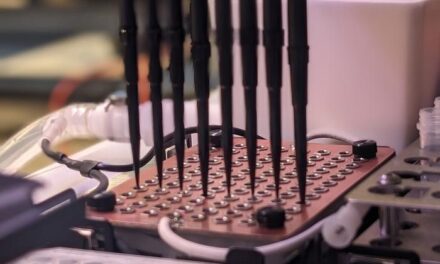Galaxy Diagnostics, Durham, NC, launched the Nanotrap Urine Test for Lyme Borreliosis. This urine-based Lyme antigen test provides the most sensitive direct detection of Borrelia burgdorferi infection at all stages of the disease.
The test provides advantages antibody testing does not, namely:
- Identifies positive cases missed by CDC-recommended Two-Tiered Testing (TTT)
- Reduces concern for false positive results via direct detection of OspA proteins
- Uses easy-to-collect urine sample
The test greatly increases the likelihood of Lyme disease confirmation via innovative Nanotrap technology developed by Ceres Nanosciences, Manassas, Va. Nanotrap particles capture and concentrate low abundance Outer surface protein A (OspA) in urine samples confirmed by a highly sensitive Western blot.
Published data1 shows that the Nanotrap Urine Test is very effective for confirmation of early stage Lyme borreliosis in patients with EM rashes (24/24). Galaxy validation data (unpublished) shows that the Nanotrap Urine Test will often confirm active infection in patients with negative TTT results. Further research is needed to confirm clinical utility for other presentations of Lyme borreliosis, including Lyme arthritis, Lyme carditis, and neuroborreliosis.
[Read The Challenge of Lyme]
“The addition of the Nanotrap test aligns with our mission to bring the most scientifically advanced, most sensitive and most accurate sample enrichment testing to the forefront of flea and tickborne disease,” says Galaxy CEO Amanda Elam. “Lyme disease is the fastest growing tick-borne illness in the United States. We are committed to improving the standard of care around detection of these elusive, underlying pathogens to catalyze improved clinical protocols for millions of patients globally.”
Galaxy advocates for a new standard of care in Lyme Borreliosis testing and recommends a combination diagnostic protocol with Nanotrap Urine test to confirm active infection and the CDC recommended TTT to detect the presence of antibodies.
For more information and to order, visit Galaxy Diagnostics.
Reference
- Magni R, Espina BH, Shah K, et al. Application of Nanotrap technology for high sensitivity measurement of urinary outer surface protein A carboxyl-terminus domain in early stage Lyme borreliosis. J Transl Med. 2015;13:346. Published 2015 Nov 4. doi:10.1186/s12967-015-0701-z
Featured image: Nanotrap Particle Mechanism Lyme Borreliosis illustration (Courtesy: Galaxy Diagnostics)





